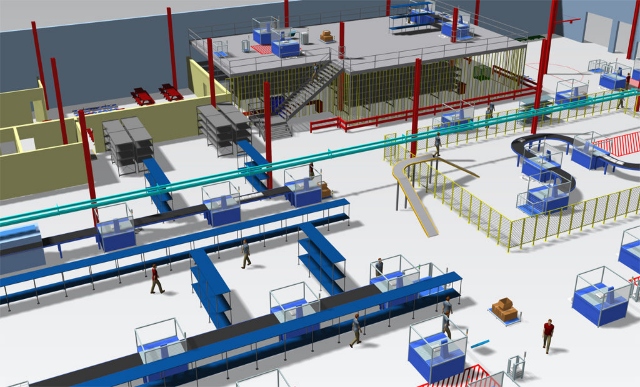Following fossil fuel, deforestation is the second largest contributor to climate change. According to a study conducted by Interpol, up to 17% of all global carbon emissions come from the destruction of forests — meaning deforestation creates more greenhouse gas than all the world’s planes, trains, cars, trucks, and ships combined — and up to 90% of rainforest logging is done by illegal loggers.
To help protect the rainforest and stop deforestation, poaching, and illegal logging, a non-profit conservation technology startup, Rainforest Connection, was founded in 2014. “If we can help the people in the forest enforce the rules that are there, we could eat heavily into this 17% and potentially have a major short-term impact,” says Topher White, CEO and Founder of Rainforest Connection. “It might just be the cheapest, fastest way to fight climate change.”
With a background in physics, engineering, and technology, White considers himself an “accidental environmentalist” who came up with the idea for his startup in 2011 while he was volunteering at an Indonesian nature reserve focused on protecting gibbons (small apes found throughout Southeast Asia). While he was walking through the rainforest there — about five minutes from a ranger station that housed three full-time guards to protect the sanctuary against illegal logging — White stumbled upon someone who was cutting down a tree. “The rangers hadn’t been able to hear the chainsaw because the noises in the forest were so loud,” White says. “It got me thinking that we could use what was already there — the sounds of the forest, a group of dedicated rangers, and surprisingly good cell phone connectivity — and build a system that would programmatically pick up the chainsaw sounds that people can’t hear. If we could place devices up in the trees — such as reprogrammed phones that are full of sensors — to listen to the sounds of the forest, connect to the cell phone network that’s there, and send alerts to people on the ground, perhaps we could offer a simple and scalable solution to this problem.”
Putting the Plan into Action
With a real-time logging detection system, rangers could pinpoint deforestation activity as it occurs instead of relying on current systems such as satellites, which show destruction days or weeks too late. “We are building technology to help fight deforestation across the world, but it’s not about going out there and finding a tree that’s already been cut,” says White. “It’s about real-time intervention made possible by cell phones recycled from people around the world who want their discarded devices to be doing something positive. The whole idea behind the Internet of Things (IoT) is that we don’t need to build entirely new sensors to put out in the forest. Old cell phones are fantastic little computers that can connect to the networks that already exist out there.”
Once back in Silicon Valley, White engineered the first device, called a “guardian,” using a recycled phone surrounded by a unique solar panel design — built from recycled industrial byproducts — that harvests sunflecks to keep the cell phones powered in the hard-to-penetrate tree canopies 150-200 feet off the ground where there is optimal sunlight and reception.
White developed a simple application that analyzed the live audio stream from the mobile device, identified the sound of a chainsaw from the various other noises, and sent an alert to his email. After testing the device in some tall trees north of San Francisco, he determined it was ready to be tested in a real rainforest to verify that the solar panels would power the device and the detection system worked as designed to deliver notifications of illegal events. With the Rainforest Connection startup established, White traveled back to Indonesia to another reserve that was threatened daily by illegal logging.
Pilot guardians were placed high up enough in trees to hear chainsaw noises up to a kilometer away, allowing them to cover three square kilometers. The guardian devices record audio of the sounds in the forest, and the system streams the sound into the cloud over the standard cell phone network, where application users can analyze the data for chainsaws, logging trucks, or any other signs of danger. When it detects chainsaw noises, the system automatically sends alerts to local rangers on the ground who can intervene and halt the activity on the spot. Additionally, each guardian has a theft-detection routine so if an installed device is moved, local authorities receive an alert.
“With our real-time logging detection system, we can pinpoint deforestation activity the moment it begins, while simultaneously streaming the data openly and immediately to anyone,” says White. “On the second day of testing, the system picked up illegal chainsaw noises and sent a real-time alert. We took off and were able to surprise the illegal loggers within minutes. It was such an impressive event for these loggers to be caught that they have not been back since. That convinced us that if you can show up in real time and stop people, it’s enough of a deterrent that they won’t come back.”
 Guardian devices, which are placed high up in trees and cover three square kilometers, record audio of the sounds in the forest. The data is then sent into the cloud over the standard cell phone network to be analyzed for chainsaws, logging trucks, or any other signs of danger.
Guardian devices, which are placed high up in trees and cover three square kilometers, record audio of the sounds in the forest. The data is then sent into the cloud over the standard cell phone network to be analyzed for chainsaws, logging trucks, or any other signs of danger.
Predicting Illegal Logging Before It Happens
It’s one thing to show up and confront loggers when chainsaws are detected. But how much more impactful would it be for rangers to show up before the sawing begins and the trees are cut down? “There are so many more analytics that we can use on top of the system to make more of a difference,” White says. “Real time for us is so important — but imagine if real time could be actually pushed into the future. With predictive analytics, people could show up and stop loggers on their way in before any damage has been done, and that’s a whole sea of change for the people out there.”
For help with introducing predictive analytics to its illegal logging detection system, Rainforest Connection teamed up with SAP. “Right now, we have an amazing trove of data — all these classifications that say what’s happening in the forest, but we don’t know what it all means,” White says. “SAP, which is really the specialist in taking huge amounts of data and pulling out business insights, showed up and helped us in some pretty novel ways. And in applying these insights to deforestation, to crime, to ecology in general, we can discover some truly amazing things.”
Help from SAP came in the form of a mobile innovation truck — literally a lab on wheels — called the “SAP Run Live Truck,” where SAP specialists park a vehicle somewhere for a work week and collaborate with companies to deliver prototypes built on SAP Cloud Platform. During this week, a small team works with the customer to define the use case using the Design Thinking approach, holding daily 15-minute standup meetings and demos to product owners and others. At the end of the week, the customer presents the rapidly developed prototype.
The prototype developed for Rainforest Connection included a predictive model that identified patterns in bird noises to predict the sound of a chainsaw before it even started. Certain birds that normally create loud and constant chatter in the rainforest will quiet down just before a chainsaw event occurs. The predictive model used the sound (or lack of sound) of the birds to predict a future event. “With the SAP Run Live Truck, SAP managed to show us in a couple of days that there’s a predictive way to pick out chainsaws in advance of them going off,” says White. “Just knowing that certain birds changing their noises can lead us to pinpoint where there will be a chainsaw — that’s a pretty cool thing to prove in less than a week. The results were way beyond expectations, considering that they were able to pull out insights from the data we provided that could be published as legitimate scientific discoveries.”
With predictive analytics on SAP Cloud Platform in place, rangers in the rainforest can be notified in advance that someone will start a chainsaw and cut down a tree. The prediction of when and where the event is likely to happen is based on historic rainforest sound events — such as noises from chainsaws, birds, and apes — captured by the guardians and streamed to a predictive model for detection. A mobile app alert warns rangers five minutes before a chainsaw event is likely to happen, and they are then guided via an augmented reality layer that displays the direction and distance to their destination. Additionally, reports on illegal logging and statistics on other events are available in easy-to-use SAP Analytics Cloud dashboards for local authorities and rangers.

 SAP managed to show us in a couple of days that there’s a predictive way to pick out chainsaws in advance of them going off. Just knowing that certain birds changing their noises can lead us to pinpoint where there will be a chainsaw — that’s a pretty cool thing to prove in less than a week. The results were way beyond expectations.
SAP managed to show us in a couple of days that there’s a predictive way to pick out chainsaws in advance of them going off. Just knowing that certain birds changing their noises can lead us to pinpoint where there will be a chainsaw — that’s a pretty cool thing to prove in less than a week. The results were way beyond expectations.
— Topher White, CEO and Founder, Rainforest Connection
What’s Next for Rainforest Connection Data in the Cloud?
With all the sounds of the forest being captured and streaming in the cloud, there’s a full archive of forest happenings that can be analyzed in real time using software and artificial intelligence. Users can even download a free app to listen to the forest noises that guardians in the trees are capturing 24/7. “There are many ways to use technology and partnerships to save the rainforest,” White says. “Sometimes it’s stopping loggers in the field, sometimes it’s spreading word to governments, nongovernmental organizations, and the rest of the world, and other times it’s connecting people on the subject and finding new and exciting ways for them to care about it.”
This is just the beginning of what is possible to come out of a partnership between SAP and Rainforest Connection. Stay tuned for future news of the next step on this journey to save the rainforest.
 Guardian devices, which are placed high up in trees and cover three square kilometers, record audio of the sounds in the forest. The data is then sent into the cloud over the standard cell phone network to be analyzed for chainsaws, logging trucks, or any other signs of danger.
Guardian devices, which are placed high up in trees and cover three square kilometers, record audio of the sounds in the forest. The data is then sent into the cloud over the standard cell phone network to be analyzed for chainsaws, logging trucks, or any other signs of danger.












